70th Anniversary of the Casablanca Conference – January 14-24, 1943
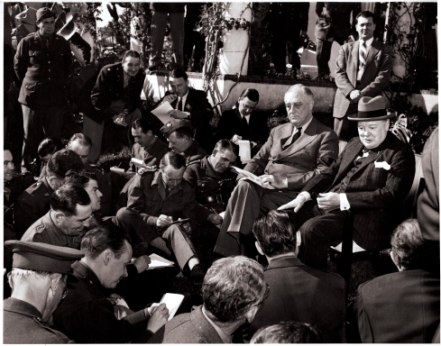
From 1942 to 1944 one subject dominated Allied strategic debate—the creation of a Second Front in Europe. This thorny issue caused friction between America, Great Britain, and the Soviet Union. It topped the agenda of the January 1943 summit meeting between FDR and Winston Churchill at Casablanca, Morocco, held shortly after the Allied invasion of North Africa.
Though Soviet leader Stalin didn’t attend this meeting, his feelings were clear. For 18 months, the Soviets had single-handedly resisted a massive German invasion. Stalin demanded that his allies strike quickly at the heart of Hitler’s empire in northwest Europe, establishing a “second from” to draw off some German forces from the USSR.
FDR’s military advisers favored the earliest possible assault on northwest Europe. But Churchill argued that a large buildup of forces was necessary to ensure a successful invasion. Because this was unlikely in 1943, he pushed for a more limited, “peripheral” strategy of attack along the edges of the Axis empire, starting with an assault on Sicily. Meanwhile, a buildup of forces in Britain for an invasion of northwest Europe would begin. Roosevelt, eager to keep the American public focused on the fighting in Europe, agreed.
To ease Stalin’s disappointment, FDR offered a signal of Anglo-American resolve: he announced the Allies would only accept an “unconditional surrender” from the Axis Powers.
Below is a series of objects, photographs, and documents from the FDR Library’s collection related to the Casablanca Conference.
This flag of the President of the United States was handmade on board the U.S.S. Memphis by five sailors at FDR’s request and flown from that ship while at anchor in Bathurst, Gambia, West Africa, in January 1943. The Memphis had been ordered to anchor off Bathurst in order to provide safe quarters for FDR and his party en route to and from the Casablanca Conference. This was the first time the President’s flag had ever been flown from an American warship in an African Port. Upon seeing the flag for the first time, President Roosevelt stated that “No ship has ever made a President’s flag is such record time, and it is a darn good flag.”
These pages from the guestbook at the Casablanca Conference include the signatures of Sultan Mohammed V of Morocco, Churchill, Roosevelt, advisor to the President Harry Hopkins, Minister to French North Africa Robert D. Murphy, General George S. Patton, naval aide to the President Admiral John L. McCrea, Elliott Roosevelt, and co-President of the Free French Forces General Henri Giraud. From the Roosevelt Family, Business & Personal Papers.
FDR used this U.S. Army mess kit and canteen at a field luncheon during his visit to Rabat, Morocco, to review American troops on January 21, 1943.
Franklin Roosevelt and Winston Churchill with their Chiefs of Staff, January 22, 1943. NPx 66-104(20)
On the evening of January 22, the Sultan of Morocco hosted Roosevelt and Churchill to dinner. During the dinner he presented these gifts to the President. The dagger is fitted with a gold hilt and sheath and is encased in a teakwood box inlaid with mother-of-pearl. The gold tiara encrusted with semi-precious stones from the Atlas Mountains and a pair of gold bracelets from the Sultan’s collection of family jewels were presented as gifts for First Lady Eleanor Roosevelt.

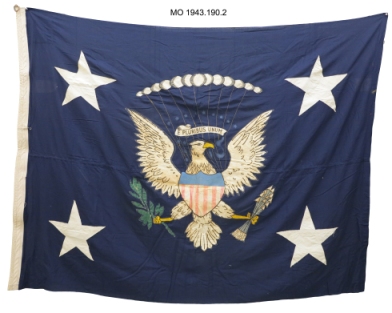
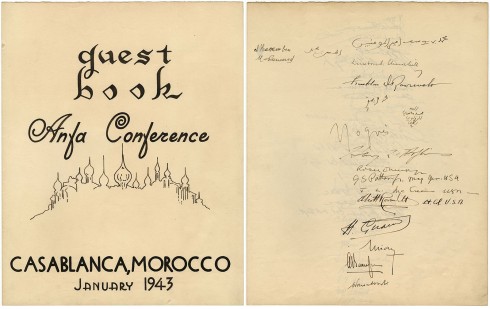
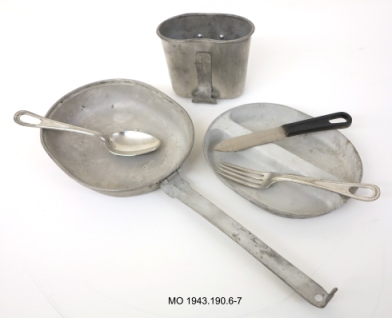
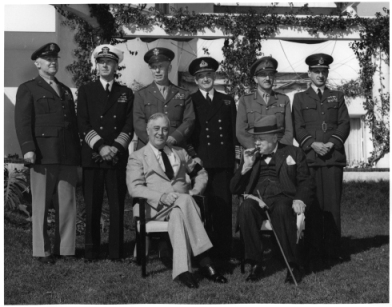
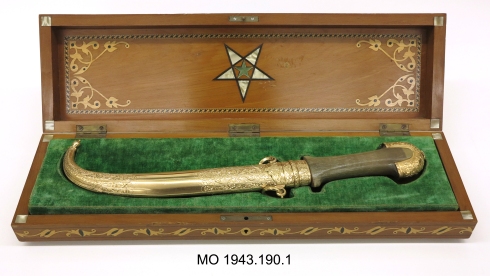
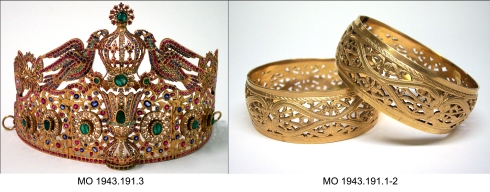
You must be logged in to post a comment.